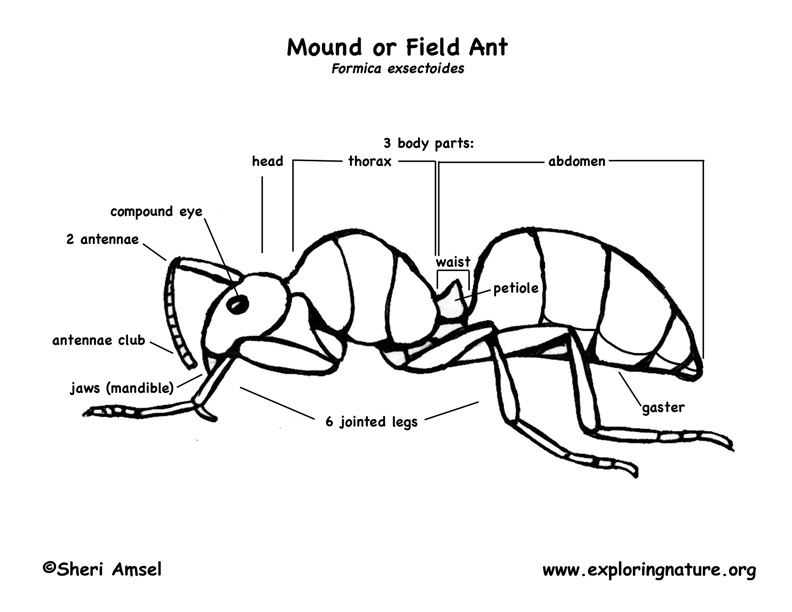

Mound ants are found in eastern and southern North America. They are originally from Europe, but were brought to North America with the settlers. They build their nests below cracks in the sidewalk or in stone covered areas. They do not like intruders and will attack other ants (or any species, including human) that bother their nests. They are often found hovering near tubular flowers collecting nectar. They are scavengers and will eat anything they can find, including plant materials like pollen, nectar and sap. Mound ants start as tiny worm-like larvae, grow larger and larger and finally pupate and go through a metamorphosis into their adult form. They go through a “complete metamorphosis.
Find downloadable versions in the pdf at bottom.
When you research information you must cite the reference. Citing for websites is different from citing from books, magazines and periodicals. The style of citing shown here is from the MLA Style Citations (Modern Language Association).
When citing a WEBSITE the general format is as follows.
Author Last Name, First Name(s). "Title: Subtitle of Part of Web Page, if appropriate." Title: Subtitle: Section of Page if appropriate. Sponsoring/Publishing Agency, If Given. Additional significant descriptive information. Date of Electronic Publication or other Date, such as Last Updated. Day Month Year of access < URL >.
Amsel, Sheri. "Ant Inquiry - Read, Observe, Record" Exploring Nature Educational Resource ©2005-2024. December 13, 2024
< http://exploringnature.org/db/view/1375 >





